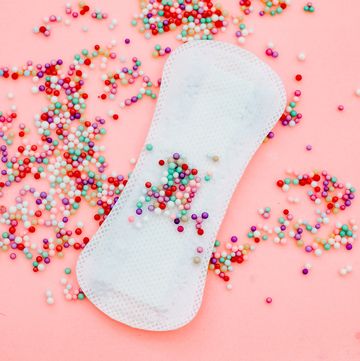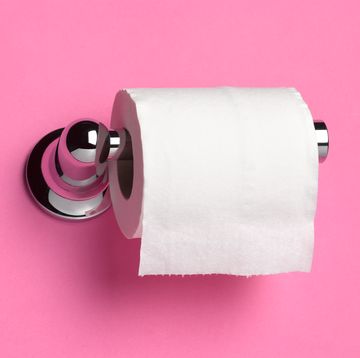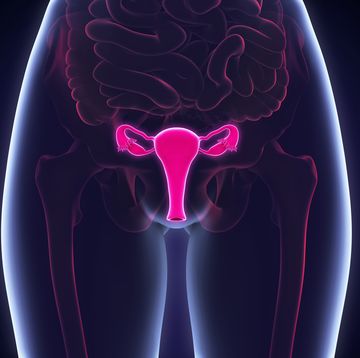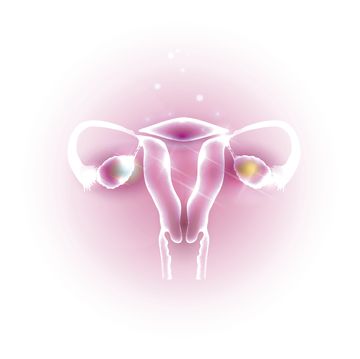The woman poised to fix America's breast cancer problem is sitting across a wrought-iron table from me talking about the time, years ago, that she realized mammograms were failing to save women from cancer. We're in Laura Esserman's lush San Francisco backyard garden and it's 9 AM on a Saturday—the only time she could find to talk this week. She's projecting calm, her hands wrapped cozily around a coffee cup—this despite the fact that she's in the final stages of launching a career-defining, history-rewriting study set to open its enrollment to 100,000 women in January. Should it confirm her controversial beliefs, she'll have the data she needs to change all our minds about the way we've been approaching mammograms—and make them the lifesaving screening tool they were always meant to be. Dr. Esserman has been named to the Rodale 100 for her extraordinary achievements in the health space; click here to see the full list of this year’s honorees. (Looking for answers to your most pressing health questions? Prevention has you covered—get a FREE trial + 12 FREE gifts.)
"40,000 women a year still die of breast cancer. We need to find a better path."
Esserman, a renowned breast surgeon at the University of California at San Francisco, has designed a new system of screening that will do what the current one has not: dramatically lower the number of women who die from breast cancer. She wants to do away with the blanket mammogram guidelines that we regard, falsely, as our savior from disease. She sees current guidelines as not only ineffective and irrelevant, but actually damaging to women's lives. She is ready to take a nation of women, most of us terrified of breast cancer, through an uncomfortable transition that she believes will benefit us all: Laura Esserman is going to show us why we should loosen our white-knuckle grip on mammograms.
To say this will be a challenge is an understatement. But as a compassionate-as-hell doctor known for singing to patients as they sink under anesthesia—and for her unfailingly collaborative approach to treatment ("If you want a doctor who just tells you what to do, I'm not the right match," she says)—Esserman may be just the right blend of nurturer, hard-ass, trustworthy friend, and well-spoken public figure for the job.
She flicks on a small fountain, raising her voice ever so slightly to talk over the bubbling water. "We still have about 40,000 women a year who die of breast cancer," she says, as if speaking the number alone leaves a bad taste in her mouth. "Everyone is trying to do the right thing, but we need to find a better path."
As we talk, a hummingbird materializes, passing over deep green shrubs to hover amid the branches on the tallest, leafiest tree in the garden. The bird's wings purr, audible over the fountain; it's impossible not to think about how it would lose momentum if it stopped beating its wings, even for just a moment.
After a long pause, Esserman starts speaking again. "When you have a particularly tough situation, it makes you uncomfortable," she says. She's thinking of her individual patients, all of them ransacked by disease, some of them running out of time. Or maybe she's considering the entire, population-level mess we're in. Perhaps it's both emergencies keeping her beating forward, momentum ever stronger. "But that discomfort yields creativity," she continues. "It's not only about doing the best you can today, it's about making sure that tomorrow we can do something better."
Mammography—an x-ray of the tissue inside the breast—has been around since 1913, but the idea to use it for cancer screening came about in the 1960s. The hope then, of course, was to dramatically reduce breast cancer deaths. The thinking seemed logical: The more we looked for cancer, the more we'd find. The more cancer we found, the more cancer we'd treat, and if everything went well, the more we treated, the more lives we'd save.
In terms of finding disease, the plan certainly worked: Between 1980 and the early '90s, as screening mammography swelled in popularity, we caught about 30% more breast cancers.
MORE: 10 Cancer Symptoms Most People Ignore
In the mid-'80s, Esserman was a resident at Stanford. "I'd always been interested in cancer, but in my training as a surgeon I was hunting for the specialty with the biggest need," she says. "I thought with breast cancer there was opportunity." She remembers attending a conference and hearing a talk about the dramatic impact regular screening was having on colon cancer, mainly through colonoscopy. Early detection—and subsequent treatment—of precancerous polyps had significantly reduced the rates of full-blown disease, the presenters were saying. In that moment, Esserman realized, "Oh, my goodness, that is not what's happening in breast cancer," she recounts. More cancers were being detected, yes, but treating them early was having only a tiny impact on the death rate. She stayed up late one night with a colleague discussing the issue. "We kept saying, 'We have to do something; we have to work on this.'" Mammograms were being promoted as lifesavers, but the evidence suggested otherwise. Further, they were having widespread negative effects: Eventually, research would show that women who had false positives faced emotional consequences years after they were given the all clear. Esserman couldn't shake the feeling that something was going truly awry.
As more and more women got mammograms, the breast cancer mortality rate had decreased, but only a little, and experts say that was largely a result of advancements in treatment, not regular screening. Despite this reality, the popularity of the test kept growing. And fear of breast cancer seemed to skyrocket with it: By 1995, women between the ages of 40 and 50 estimated they had a 20 times greater risk of dying of breast cancer than they really did, and survey results showed that they thought screening mammography was six times more effective at reducing that risk than it really was. Their terror was compounded by disempowerment: "In the early '80s and '90s, women were going in for a biopsy and leaving the OR having had a mastectomy," Esserman remembers. "They were not being given the chance to be involved in the decision making, and they were angry."
Mammograms were being cast as lifesavers, but the data suggested otherwise.
Early detection via mammograms was positioned as our last chance at wresting back control over this deadly disease and the doctors who treated it. Awareness-raising organizations like the American Cancer Society contributed to the sense that we were all fully responsible for our own fate, circulating ads and flyers with slogans such as If you haven't had a mammogram, you need more than your breasts examined. By 2000, 70% of American women had had a mammogram in the previous 2 years. As we flocked to 5K road races and weekend-long fund-raising walks, as we walked for our sisters and our friends, we talked about the importance of mammograms.
The pink-ribbon movement gained momentum, and Esserman continued to accumulate research showing that screening mammography was increasing breast cancer diagnoses without the anticipated reduction in breast cancer deaths. She finally published her observations in a paper in the medical journal JAMA in 2009. She'd prepared herself with the best science-backed evidence she had, but the reaction, to her surprise, was outrage. "I didn't mean to say someone was wrong; I meant it as an opportunity to think," she says. "But I learned polarizing people doesn't lead to progress."
Just 2 months later, the United States Preventive Services Task Force—a government-funded panel of medical experts that essentially decides what's considered solid, science-backed medicine in the US—updated its recommendations for screening mammography, declaring that women under 50 who got regular mammograms were far more likely to experience harm than to benefit. People "flipped out," Esserman recalls, at the idea of having their pre-50 mammograms taken away from them. Patients and doctors alike were reeling; when you're told for decades that early detection will save your life, it's hard to wrap your head around the idea that it might not help much at all. By then we'd witnessed more celebrities than we could count saying that mammograms had saved their lives. Our friends' mothers and mothers' friends—hell, our own mothers—had had scary brushes with breast cancer and credited their survival to mammograms. How could we not all want to protect ourselves as early as possible?
Like centuries of doctors before her, Esserman likes to talk about medicine as an art; it takes creativity to effectively apply population-level guidelines to the unique particulars of a patient's case. In art, she reminds me, practice is essential; artists and performers are constantly moving toward something bigger. "But in medicine, we're missing the piece that says we should be improving as part of our routine," she says. It's all she wants: to get better. She wants that for medicine as a whole and for her patients as individuals. Of course, sometimes people physically can't get better. "When you see someone dying," she says, her eyes narrowing at the thought, "it's what fuels you. I look at these people who don't have 10 years to wait for a new system, and I know we can figure out better screening and treatment faster. That's what gets me up in the morning."
Even today, women say that breast cancer is the disease they fear most.
Around the same time that the USPSTF's recommendations came out, new research started highlighting just how concerning the screening situation was. Large studies comparing women who got screened with those who didn't revealed that mammograms were excellent at finding cancers that may never actually need to be treated at all—that might even go away on their own, as up to 20% of cancers are thought to do. Mammograms detected calcifications, growths that most often turn out not to be anything whatsoever, yet they result in callback appointments for additional imaging or biopsies, raising nerves (and health care costs) in the process. They were excellent at finding cancers that were so slow-growing a woman would eventually have noticed a lump while dressing or showering and ultimately had the exact same prognosis and treatment as if it had been discovered by a mammogram earlier. And they were single-handedly responsible for the dramatic increase since the 1980s in ductal carcinoma in situ, or DCIS, a type of precancerous growth routinely treated as invasive disease, despite vocal disagreement from Esserman. She is only just now gaining some support for her view that nothing more than watchful waiting is appropriate for the lowest-risk DCIS patients.
MORE: 6 Alternative Doctors You Should Consider Seeing
The evidence against the test became so damning that in 2013, the Swiss Medical Board decided to do away with screening mammograms entirely, supporting no new awareness-raising initiatives and phasing out existing programs over time. And in 2014, a group of high-profile UK doctors—including the editor-in-chief of the medical journal BMJ and the former president of the Royal College of General Practitioners—announced publicly that they no longer personally planned to get screened with mammograms based on what they knew about the pitfalls of the test. But in America, nothing of the sort transpired. Americans kept screening extensively.
Esserman's JAMA editorial had transformed her into an agent of change—the face of the movement to overhaul breast cancer screening. By 2010, she'd become the go-to for editorials on the subject. She was—and still is—one of only a handful of doctors willing to say of a breast cancer survivor, No, a mammogram almost certainly didn't save her life.
Esserman was disheartened by the fact that everyone was fixated on the question of when to start mammograms—at 40 or 50. To her, screening more intelligently would expose that debate as medically irrelevant. And she was frustrated that what was holding us back in this debate was that we didn't have the right data to figure out what intelligent screening would look like. "The data that informs our approach to screening was collected in the 1980s," she says. We now know so much more about the different forms the disease can take and the way risk can manifest—for instance, with the BRCA1 and BRCA2 genes—and yet the studies published today analyze stats collected at a time when our understanding of the disease, and its risk factors, was much more basic. So she decided to reach out to colleagues and ask them to join her in doing the research that no one else was doing. This would be the first trial to look at breast cancer using risk factors like genetics, hormones, and breast density.
Esserman has in mind a screening method driven by science, not fear.
The morning chill has lingered; it's shaping up to be the kind of damp, overcast day that would keep most of us indoors, but Esserman is happy to be in her garden. "I don't come out here enough," she says, surveying eight purple orchids standing at attention nearby. The hummingbird has zoomed away, off to investigate other gardens. "It's not that mammograms are inherently bad," Esserman says, now perched on the edge of her wrought-iron chair. For now, even her own study sticks to the recommendation of getting one every other year after 50. It's just time to upgrade our protocol. She has in mind a highly personalized approach to breast cancer screening, in which women with the lowest risk are screened far less often than women with the highest risk. It's a method driven by science, not fear. It would mean downgrading DCIS to a noncancer status deserving of the same no-sweat attitude we have toward something like an abnormal Pap test: You're aware of it, you keep an eye on it, you make some lifestyle tweaks to be as healthy as you can. That's it. "DCIS is not an emergency," she says. "People don't die in days or months. You have time to absorb the information, understand the diagnosis, and think about treatment options."
MORE: 5 Reasons It Hurts Down There
The WISDOM study (Women Informed to Screen Depending on Measures of Risk), as it's been named, will compare the outcomes for women who get annual mammograms with outcomes for those who get personalized, risk-based screening. The women in the personalized group will be assessed by weighing factors like age, race, family history of breast cancer, personal history of breast biopsies, breast density, genetic mutations, and inherited genes. The study will tell us which factors are ultimately the most important.
In 5 years, based on WISDOM study findings, all American women could be screened according to their risk level. But Esserman envisions WISDOM running long after the initial 5-year funding runs out, expanding to a nationwide database of breast cancer incidence, false positives, and DCIS diagnoses, to continue to refine the personalized screening model and to perfect breast cancer care. If we do this right, she says, we will nab more of the lethal cancers earlier while sidestepping life-altering false positives and the epidemic of overreacting to precancers.
|
This Is the Screening of the Future
|
Surprisingly, Esserman's decision to rise above the fray—to leap over the never-ending 40 versus 50 debate in pursuit of a higher-minded solution to our breast cancer problem—has been a unifying force among warring factions. Historically, one of those most unrelenting pro-mammogram groups has been the American Cancer Society, whose representatives have been outspoken about the necessity for annual screening for all women. But, as a testament to the need for improvement, even the ACS is eager for her research. "The problem right now is that screening mammography clearly does not work very well, especially for women in their 40s," says Otis Brawley, chief medical officer of the ACS. "Debating whether to start screening at age 40 or 50 misses the point: Yes, women in their 40s die from breast cancer, and yes, we need to find those tumors, but mammography at its very best fails 80% of the women who need help from mammography in their 40s." In other words, just like Esserman, he believes mammography is not doing a remotely good enough job. Figuring out algorithms that help us better understand the disease, and who should get screened for it and when, would be a major improvement, he says.
"We have the opportunity to make a big difference for our daughters."
Esserman, who is 58, will be enrolled in the study herself. Regarding breast cancer, she admits that so far she's only accomplished what she wanted to have out of the way by 45. There's a glimmer of disappointment before she brightens. "I'm always hopeful I'll see the end of breast cancer," she says. "We have the opportunity to make a big difference in the next 10 or 20 years, for our mothers, ourselves, our daughters. I would love to have this problem solved before it ever becomes an issue for mine."
|
Take Mammos into Your Own Hands—Now
|
She inhales as the scent from a nearby blossom drifts by. San Francisco may not have four distinct seasons, but nature's cycles are nonetheless present here: Buds open, plants grow and then wither; others sprout in their place. Esserman helped create a Healing Garden out of a concrete patio adjacent to UCSF's breast care center. People take comfort in this circle of death and renewal, she says. She remembers one of her patients telling her, "'I've come to think of my disease like the garden; it too has its seasons.'"
Our own cycles of fear and hope are equally inevitable. Even today, many women say breast cancer is the disease they fear most. And even now that we have more say in medical decisions, we're choosing the most radical options: screening more, even when there's no evidence it's beneficial; treating more, even when the result is surgically removing perfectly healthy breasts; resisting when a doctor suggests it's OK to do less. For decades, women have clung to mammograms as their single scrap of control in the face of breast cancer; it will take a real wake-up call to convince the masses that for some people, opting for less screening is taking control. Doctors will have to make time for highly personalized conversations and get on board with listening more to their patients, rather than applying a one-size-fits-all rule to everyone. These are the massive barriers standing between Esserman and the changes she proposes, but she does not seem daunted. Then again, she's in the final stretch of this decades-long race. The rest of us just need to catch up.
Sarah Klein is a Boston-based writer, editor, and personal trainer currently with LIVESTRONG.com, and previously of Health.com, Prevention magazine, and The Huffington Post. She’s the graduate of the Arthur L. Carter Journalism Institute at New York University.

